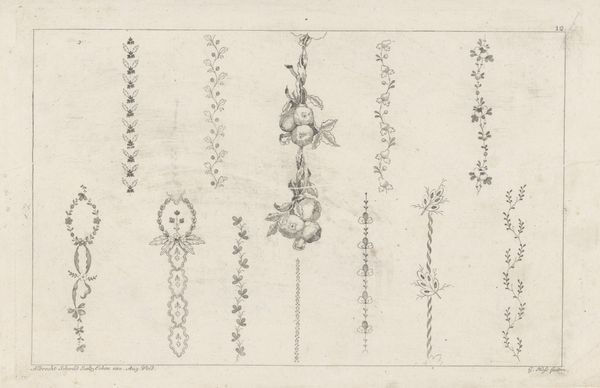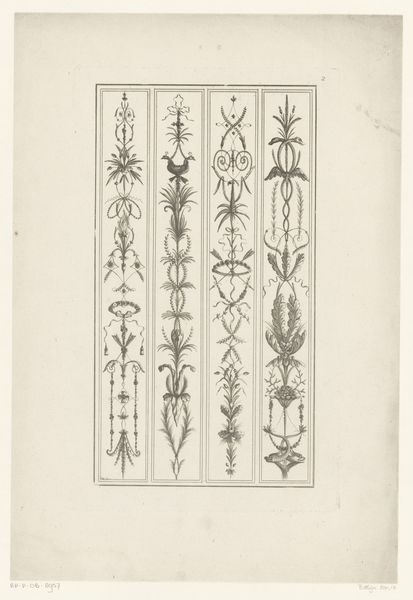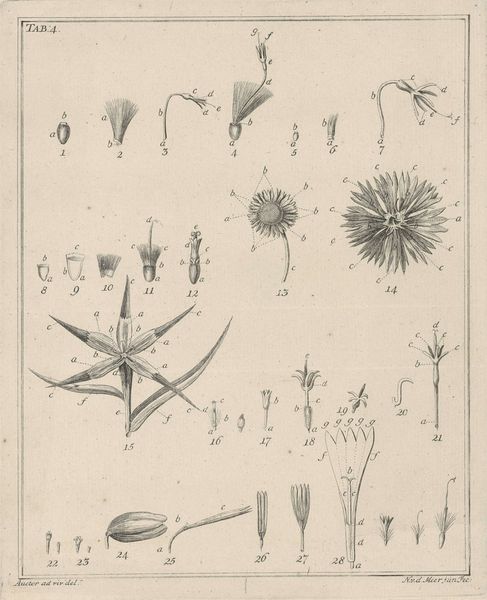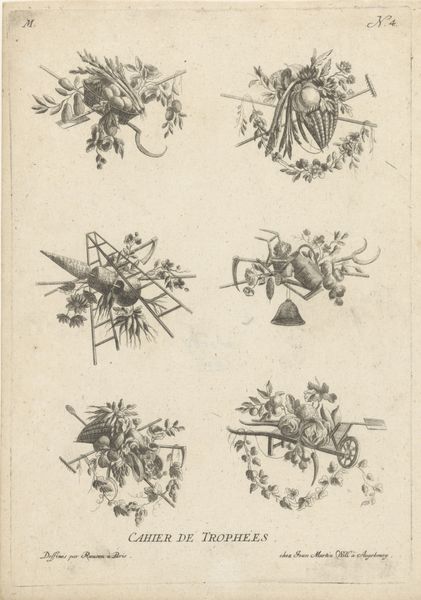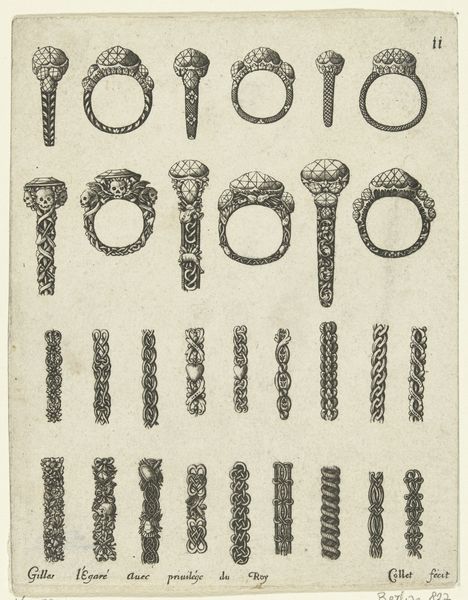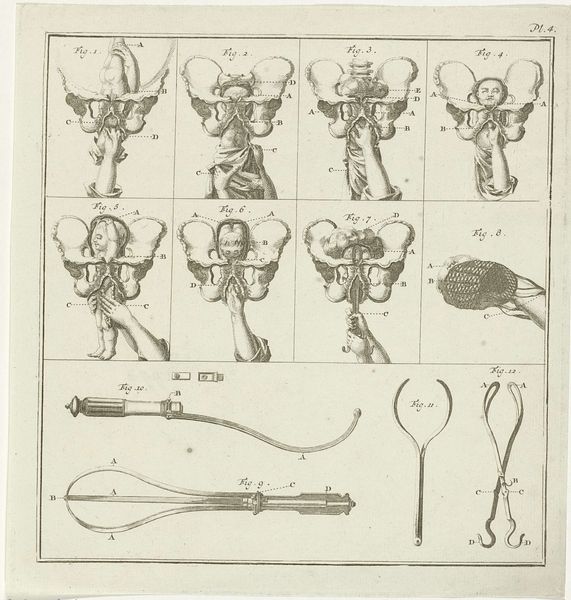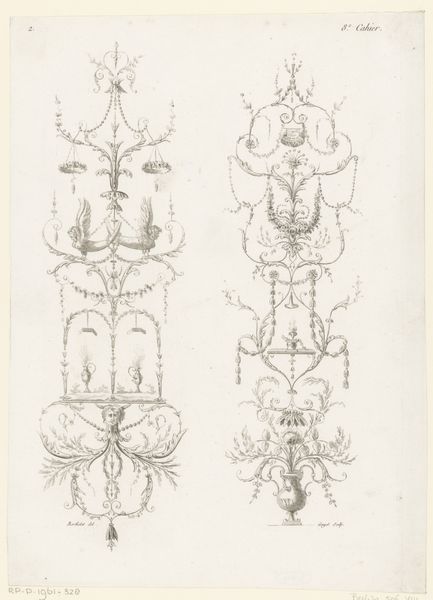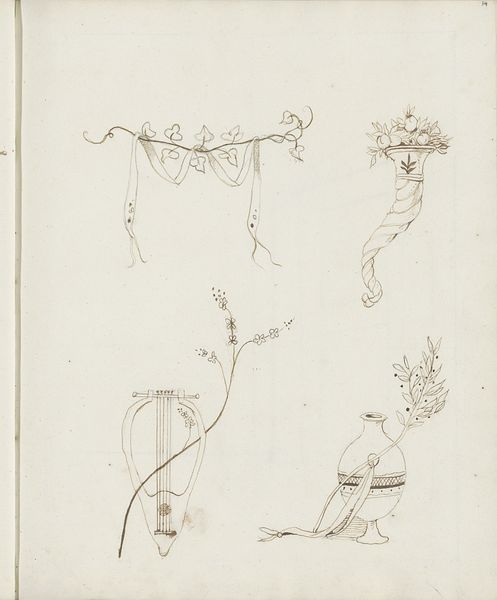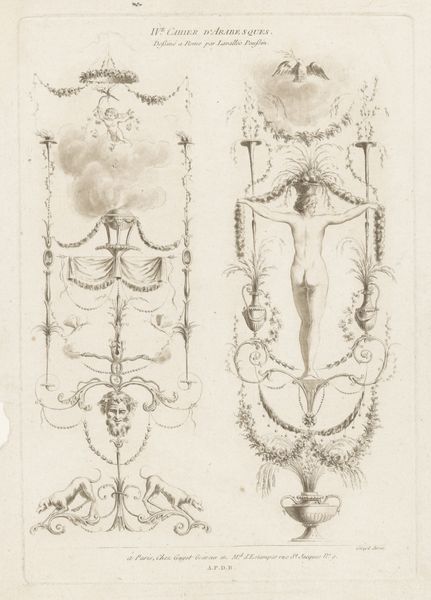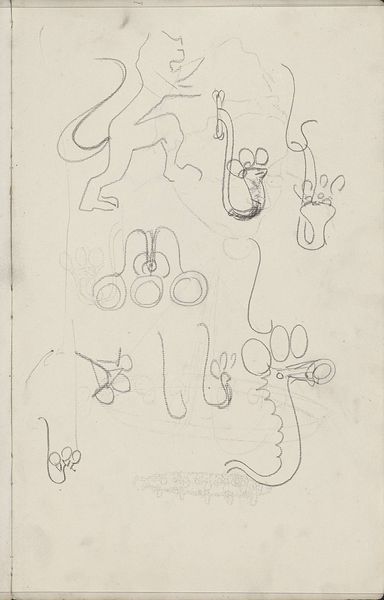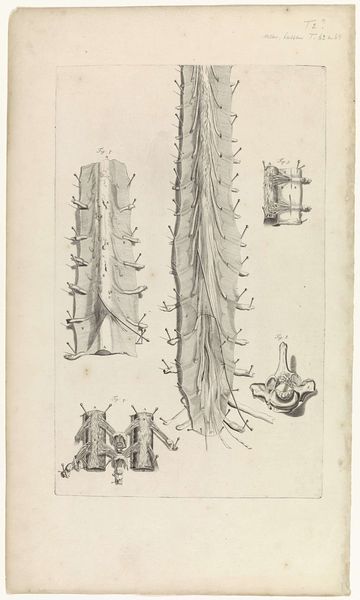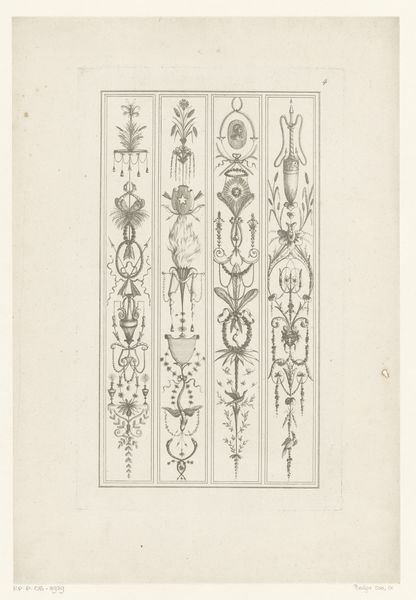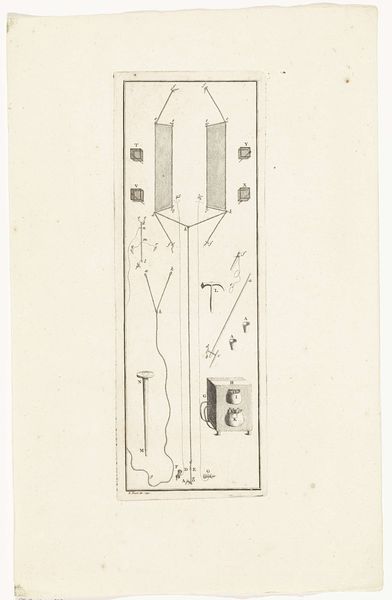
drawing, print, paper, ink
#
drawing
# print
#
paper
#
ink
Dimensions: height 210 mm, width 171 mm
Copyright: Rijks Museum: Open Domain
Curator: Here we have "Bloemen, Tab. 5" by Noach van der Meer II, an intricate drawing rendered with ink on paper. It resides here at the Rijksmuseum and dates somewhere between 1751 and 1822. Editor: My immediate impression is of intense precision. It's almost clinical in its clarity and focus on detail; each component is isolated and labeled with the exacting observation of a scientist or a cartographer. The fine lines have this brittle appearance that’s at odds with its overall goal. Curator: Indeed. It is a fascinating plate to analyze. Note how van der Meer emphasizes line quality and form over tonal values or naturalistic representation. The flowers are studies in ideal forms; it reminds us of Renaissance scientific illustrations, but there’s no spatial relationship; they all coexist in the flat plane. Editor: And think about the context in which this was made! During that period, botanical illustrations were not simply aesthetic pursuits. These works facilitated both scientific advancement and colonial administration, helping to catalogue and exploit flora in colonized territories. Curator: Precisely. Moreover, van der Meer meticulously dissected each flower, breaking down its parts to reveal its inner structure. See the repetition of geometric elements such as circles, lines, and ovals, each labeled as a step toward structural knowledge. This allows us to consider nature as a systematic compilation of shapes and elements. Editor: Right, this speaks to a very specific philosophical point of view. Nature as a legible structure rather than an unpredictable or wild force. We must also not ignore the printmaking techniques employed here; these determined not just how information was visually processed, but also shaped their production, availability, and overall historical circulation. Curator: So very true, that speaks to art's enduring purpose—whether functional or sublime—art captures our human intent to perceive and rationalize our world. Thank you. Editor: Thank you. It’s stimulating to contemplate how these flowers, rendered with such an unemotional, exacting precision, yet can bloom within wider histories about scientific investigation, philosophical beliefs and even social regulation!
Comments
No comments
Be the first to comment and join the conversation on the ultimate creative platform.

